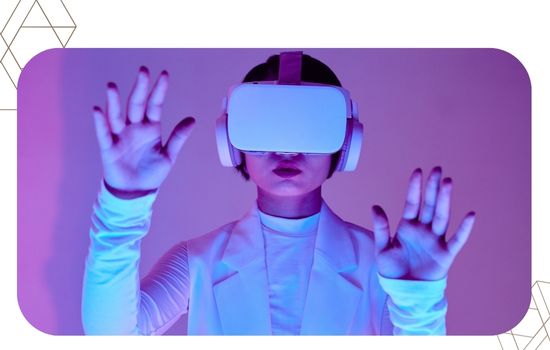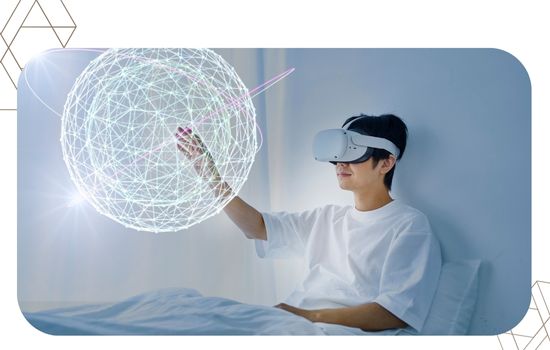Advertisements
The Augmented and virtual reality: the future of entertainment It has ceased to be a futuristic promise and has become a tangible present that redefines how fun, art, and human connection are experienced.

In the next few minutes, you'll discover how these technologies are transforming entire industries, why they generate such an emotional impact on users, and what challenges they face before they dominate the market.
Summary:
- What are augmented and virtual realities and how do they work?
- His current role in entertainment
- Real-life examples and applications
- Technological and ethical challenges
- Perspectives towards 2030
- Conclusion and FAQs
The fusion of worlds: what are augmented reality and virtual reality?
The Augmented and virtual reality: the future of entertainment They are two sides of the same coin that combine the physical and the digital in surprising ways.
While the augmented reality (AR) superimposes digital information—images, sounds, or data—on the real environment, virtual reality (VR) completely immerses the user in a computer-generated environment.
Advertisements
A clear example: Pokémon GO, one of the biggest AR phenomena, allowed millions of people to explore their cities while interacting with virtual characters.
On the other hand, VR, present in viewers such as Meta Quest 3 either PlayStation VR2, offers immersive experiences where the user “travels” to other worlds without leaving the couch.
Both technologies are evolving at a rapid pace, thanks to the miniaturization of sensors, depth cameras, and the expansion of 5G networks, which reduce latency and improve the quality of experiences.
The Real Impact: How AR and VR Are Transforming Entertainment
Entertainment is no longer limited to a screen. Today, concerts can be experienced from home with a 360° view, movies can have interactive sets, and video games integrate real-life movement, voice, and emotions.
According to a PwC report (2024), the global AR and VR industry surpassed $80 billion dollars in economic value, driven mainly by the entertainment and video game sector.
This figure shows that the Augmented and virtual reality: the future of entertainment It is not a fad, but a revolution comparable to the arrival of the Internet or smartphones.
| Application | Featured example | Main impact |
|---|---|---|
| Video games | Beat Saber, Pokémon GO | Physical and sensory interaction |
| Film and TV | VR Experiences on Netflix and Disney+ | Total viewer immersion |
| Sports | Stadiums with AR in broadcasts | Improved analytics and visual experience |
| Concerts | Virtual shows from artists like Travis Scott | Global connection without borders |
Entertainment now combines creativity, data, and technology to evoke deeper emotions.
And yet, the challenge is not only to surprise, but to make feel.

Read more: History of the first video games
An emotional experience: when technology touches the senses
Why do these experiences generate so much fascination?
Because the human brain interprets virtual immersion as a real experience.
When you move, touch, or listen within a digital environment, your mind responds with authentic emotions.
The perfect analogy would be to compare it to a lucid dream: you are conscious, but the surroundings feel real.
This is how the magic behind the Augmented and virtual reality: the future of entertainment.
Film production companies are already experimenting with VR content where the viewer chooses the outcome, and theme parks are integrating AR headsets that turn a roller coaster into a personalized space adventure.
Two examples that show the power of immersive entertainment
Example 1: In Mexico, the Frida Kahlo Museum implemented an augmented reality experience that allows you to see how the paintings "come to life" when viewed through a cell phone.
This project attracted thousands of young people and positioned the museum as one of the most innovative in Latin America.
Example 2: In eSports, the VR Master League offers international tournaments where players compete in immersive 3D environments.
The sense of presence and bodily interaction creates a level of adrenaline rush that traditional video games struggle to match.
These cases demonstrate that the value of AR and VR is not only in the technology, but in human emotion that wake up.
Technological, ethical and accessibility challenges
Despite its rapid growth, the Augmented and virtual reality: the future of entertainment still faces several challenges.
The first is the cost: High-end devices remain inaccessible to much of the public.
In addition, the eye strain, he dizziness and the security of personal data remain topics of debate.
From an ethical perspective, the line between reality and fiction is becoming increasingly thin.
What will happen when a virtual experience is more satisfying than real life?
That's one of the big questions the tech industry and contemporary psychologists are trying to answer.
Companies are working to democratize access with lighter, more affordable, and more secure headsets.
Platforms that integrate AR into mainstream phones are also being developed, enabling millions to participate without expensive hardware.
Looking to 2030: The Future of Total Immersion
If 2025 marks the year of commercial expansion, 2030 will be the era of total integration.
According to estimates by Statista, more than 75 % of entertainment brands plan to use immersive experiences in their marketing or audiovisual production strategies in the next five years.
Convergence with the artificial intelligence will further enhance this development.
Algorithms will generate dynamic scenarios that react to the user's emotions, and virtual assistants will allow characters to interact naturally.
The next generation of entertainment will not only be consumed: will be lived.
Conclusion: an emotional and technological revolution
The Augmented and virtual reality: the future of entertainment is redefining the way people experience art, games, film and music.
It is a combination of technology, emotion, and creativity that breaks down the barriers between reality and imagination.
The future is not about replacing reality, but about expand it.
Digital becomes an extension of everyday life, where every experience can be personalized, interactive, and deeply human.
Those who understand this change will not only consume entertainment, but will also be part of its evolution.
Frequently Asked Questions
1. What is the main difference between augmented and virtual reality?
AR adds digital elements to the physical environment, while VR creates a completely digital environment.
2. Which industries are adopting these technologies most rapidly?
Entertainment, video games, education, and tourism are the sectors with the greatest growth in the use of AR and VR.
3. Are immersive experiences safe?
Yes, as long as certified devices are used and visual exposure time is limited.
Major brands invest in eye safety and personal data protection.
4. When will they become accessible to everyone?
The cost of devices is expected to drop by up to 60% by 2030, enabling mass adoption in homes, schools, and businesses.
5. Will AR and VR replace traditional entertainment?
No, they will complement it.
These technologies offer new ways to experience human creativity, but they don't replace the excitement that comes with a shared experience in the real world.
In summary: the Augmented and virtual reality: the future of entertainment It is not a science fiction concept.
It is a tangible evolution that combines innovation, emotion and human connection.
Whoever understands it today will dominate the way the world experiences art, games, and communication tomorrow.



